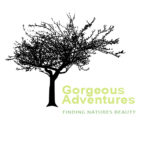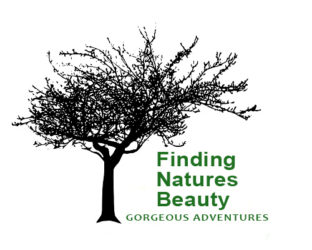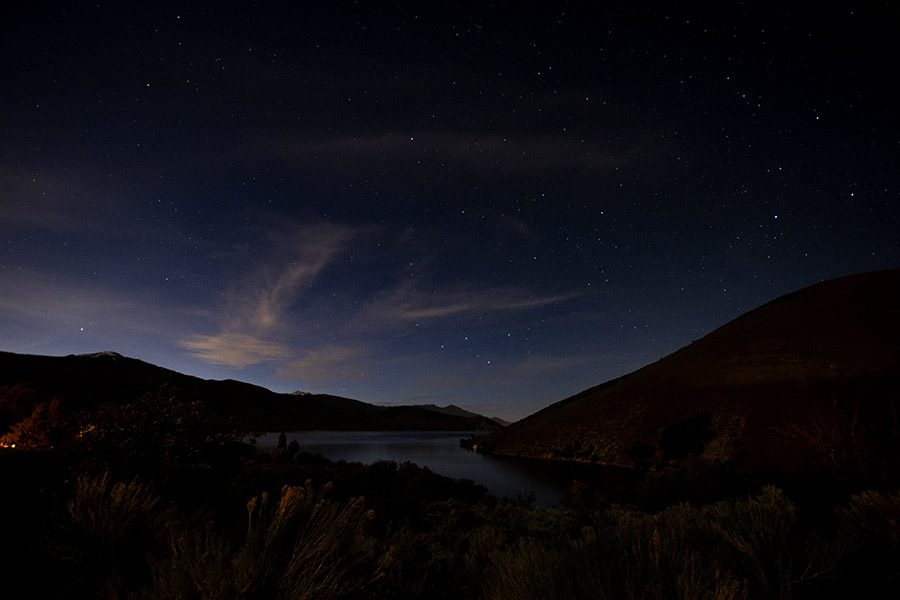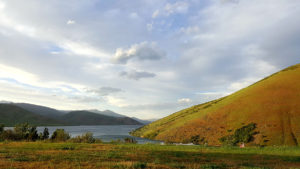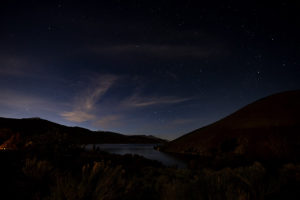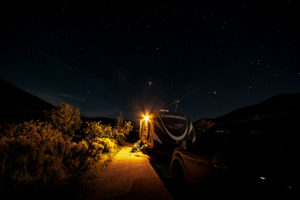Photographing after a tremendous rainstorm
I went through a tremendous rainstorm yesterday as I drove through Idaho. On my way to Black Foot Reservoir, Idaho I could hardly tell what the landscape looked like until I came out from the downpour. Then … after the storm…
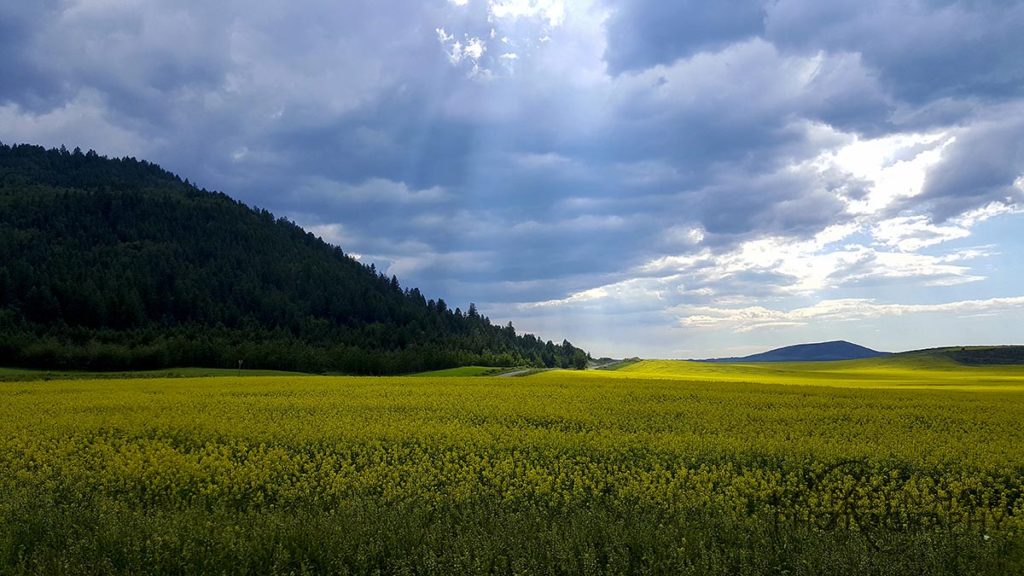
Lovely deep colors create striking photographs…
All around me were the most lovely deep colors of the landscape and then a wonderful pop of bright yellow. In the distance were dark mountains with the shadow of the clouds still on them and the bands of gentle colors in the foreground. Every once in awhile the bright pop of yellow interspersed the lovely blues and greens.
What a treat!!
When I was in a safe area, I stopped and created these images quickly as I was still on a road, (albeit pulled to the side).
I just love the rolling hills, the pop of yellow flowers, the ribbon of highway on the left, the mountains in shadow, and the rain streaks coming from the clouds in the distance. All of these elements are important in creating a visually appealing travel photograph.
Let’s take this image apart so that you can see why these matter in composing a stunning photograph.
The yellow pop of flowers against the shadowed mountains brings into play the color wheel and contrasts. The two colors, the bright yellow and predominately blue, dark shadows are not only in opposition to each other on the color wheel, but also provide a great deal of contrast. This is a totally different technique than I described here, about using coordinating colors or just one dominant color in the photograph.
When you compose a photograph, look for contrasts not only in light and dark but in opposing colors on the color wheel. If you are lucky enough to have both in the same photograph… winner! The deep blues of the clouds in the stormy sky also stand out opposite the yellow fields.
The ribbon of the highway on the left adds interest and leads your eye to the horizon. Remember the leading lines the art class teacher told you about in 4th grade? Yea, that applies here!
But there are even more leading lines.
The sun rays coming through the clouds end almost in the same place as the highway does and this only reinforces the pull for your eye to look here.
Did this photograph happen by accident? No.
I walked around until I saw the lines converge. I needed to use a high viewpoint to make sure the tiny bit of the highway was still visible and work quickly to capture the sun rays.
Once you know the rules, you can use them and strengthen just about any photograph.
Take a look at the photo below. This was taken at the same time, about 100 yards away from the first and behind me… Nice, clean, tells a story but not nearly as striking.
Take a little time to think about what you are photographing and walk around a bit if you are able. You might just be surprised at the difference a little thought can make in your final images.
These are all taken near Soda Springs on the way to Black Foot Reservoir.
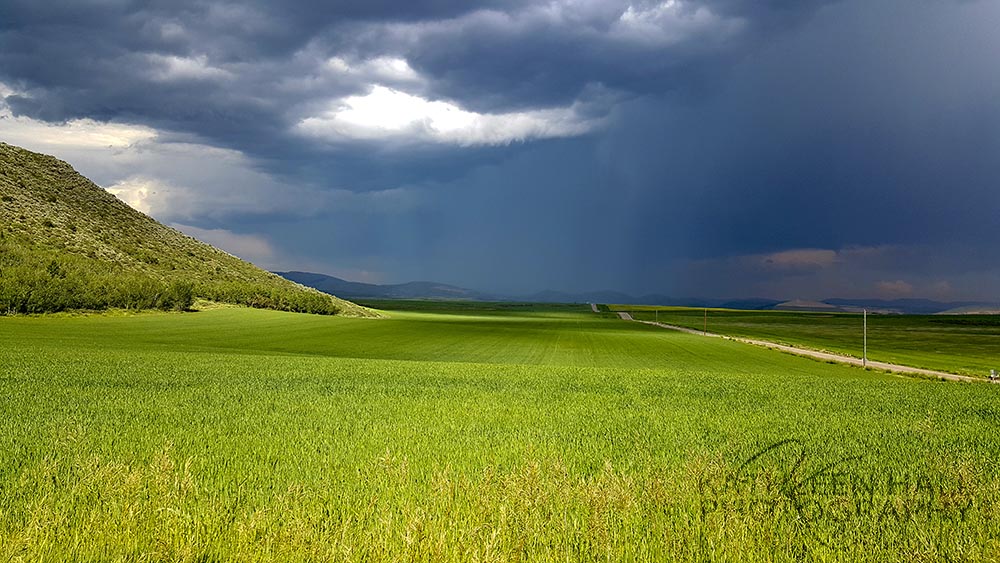
The image below was taken at sunset over the reservoir. Notice the purple clouds that are on the opposite side of the color wheel from the greens of the foliage.
Also, the visual weight of the green grasses on the left balances the weight of the dark purple clouds in the sky on the right. Look for balance in your composition as you photograph and you will be much happier with your final images.
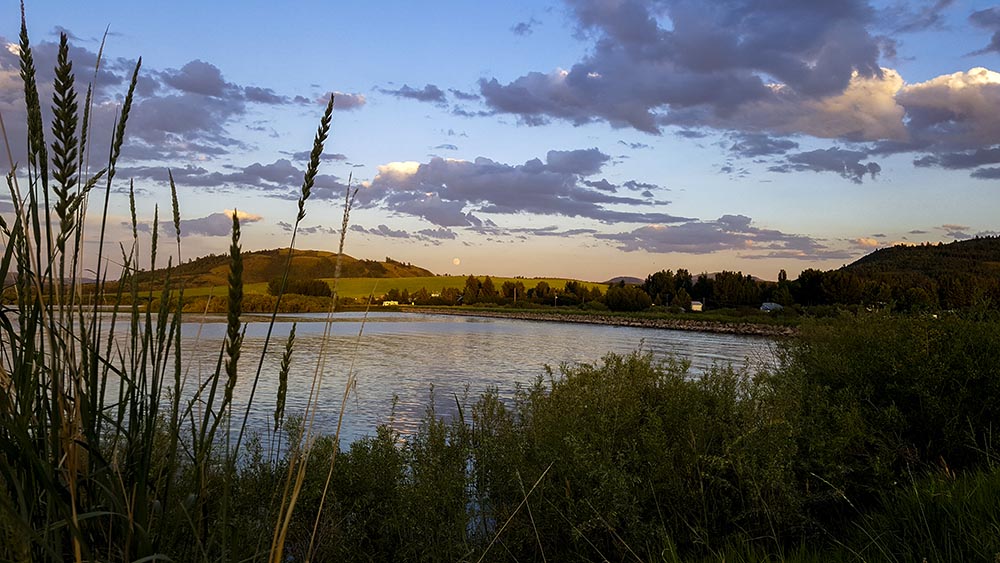
The image below was just from a different angle and minutes before the one above. The light is different and by shifting the grasses to the right of the image it produced a different feel. Again, the white clouds in this image on the upper left are balanced visually by the grasses on the lower right. Look for balance and opposing visual weight in your photographs when you compose them.
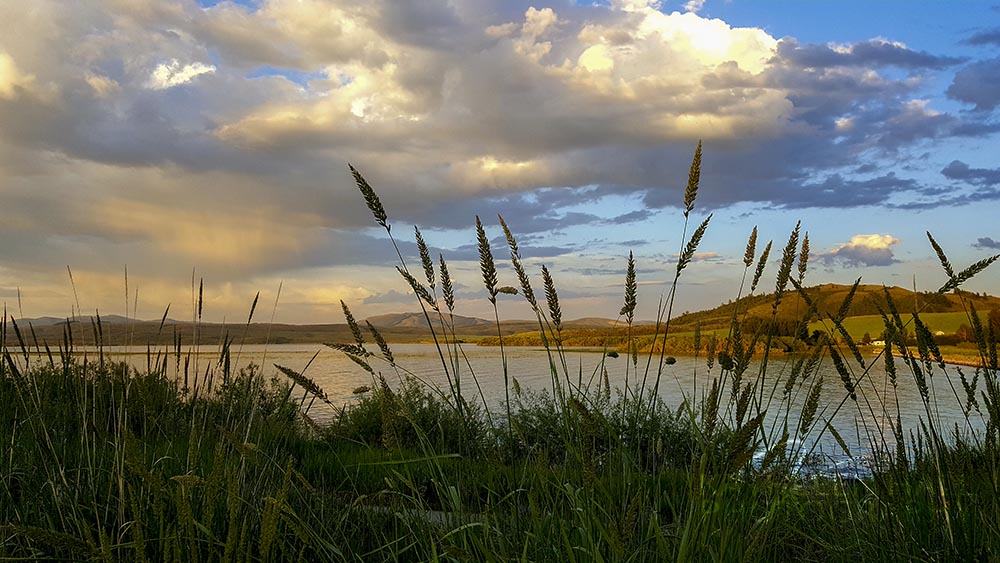
Camping provides so many opportunities for photography.
You are able to study the landscape and the light over a few days and plan your shots. Weather can always disrupt those plans, but sometimes the change in weather can be a happy surprise.
Camping here was great. The peacefulness of the campground, the lake view and the quietness of the area all lent to the wonderful feel of the campground.
I walked around the lake on the first night and was well rewarded with the full moon rising over the lake. Just gorgeous!!
For those that like to boat, camp or fish, this is an excellent area. Camping is peaceful with electric hookups available. The sites were larger with sufficient space between them so as to not feel crowded.
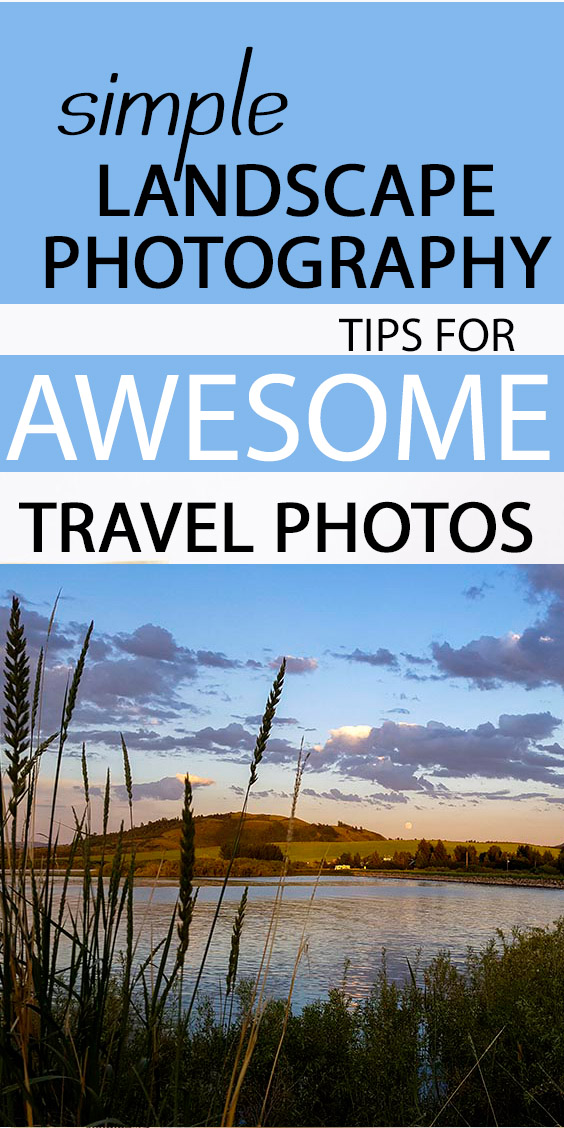
When I look at the first photograph, I like to remember that after I go through a trial, even if it is just a rainstorm, that we are often rewarded with seeing the mundane everyday things of life in a new and fresh way.
And hopefully, we remember that they always were that gorgeous, we just couldn’t see them.
Thanks for reading. I hope I expand your view of the world and give you a few tips for creating your own gorgeous images.
If you would like to see more of my travels and hints for creating better travel pictures, please subscribe to this blog below.
